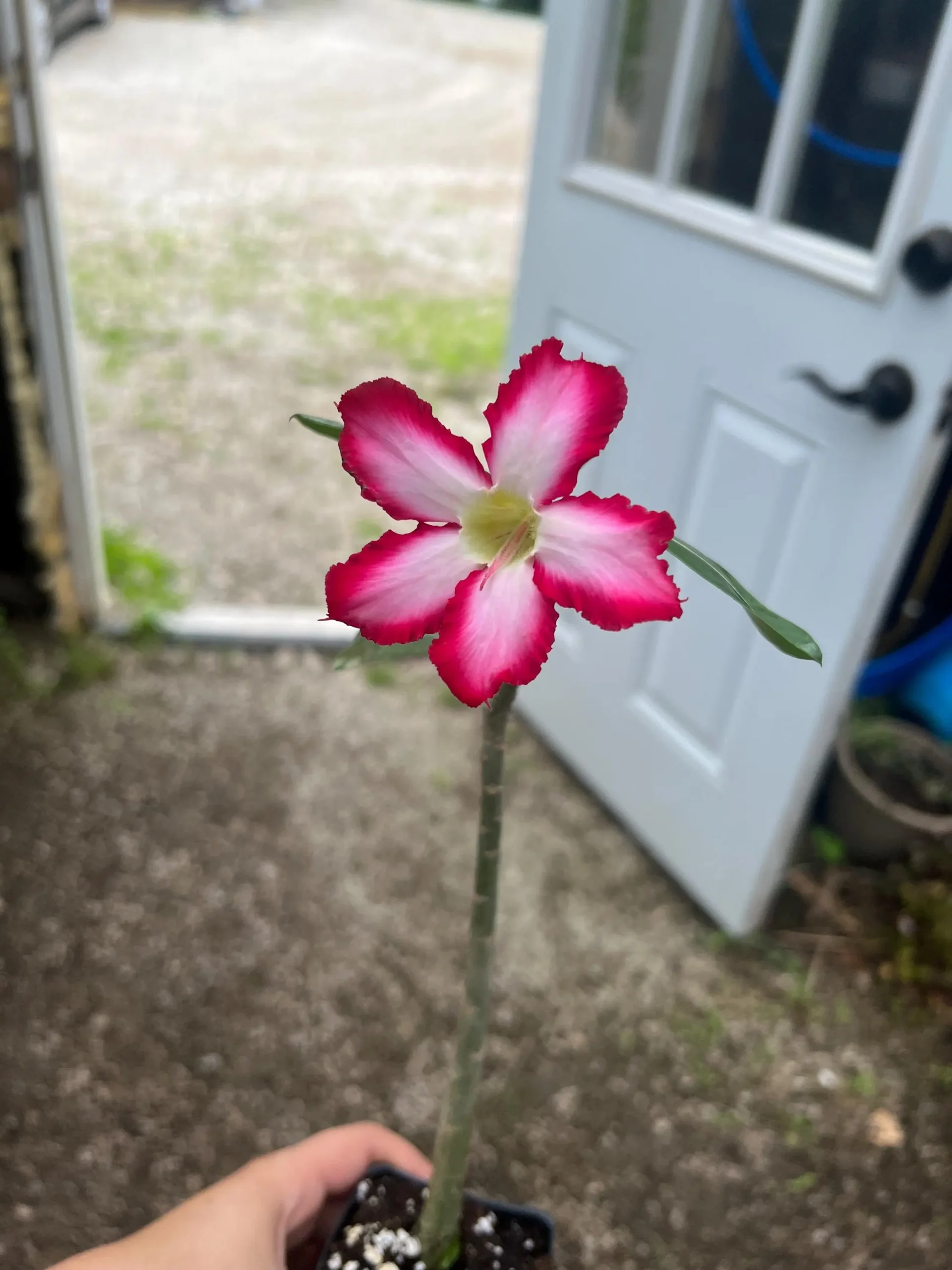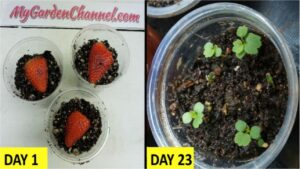The Pink Desert Rose (Adenium obesum) is a stunning succulent known for its vibrant, pink flowers and unique appearance. It thrives in warm, dry conditions and is relatively easy to care for. Here’s a guide to help you keep your Pink Desert Rose healthy:
1. Light
- Full Sun: Place your Desert Rose in a location where it gets at least 6 hours of direct sunlight each day. This helps promote healthy flowering and strong growth.
- Indoor Care: If you’re growing it indoors, make sure it gets plenty of light. A south- or west-facing window is ideal.
2. Temperature
- Warm Conditions: Desert roses prefer temperatures between 65°F (18°C) and 95°F (35°C). Avoid temperatures below 50°F (10°C), as they are sensitive to cold.
- Humidity: They thrive in low humidity and will struggle in damp, humid environments.
3. Watering
- Water Sparingly: Desert roses are drought-tolerant, so let the soil dry out between waterings. Overwatering is a common mistake, leading to root rot.
- Watering Schedule: Water when the top 2-3 inches of soil feel dry. In the winter, reduce watering further.
- Drainage: Ensure your pot has good drainage to prevent water from sitting around the roots.
4. Soil
- Well-Draining Soil: Use a cactus or succulent mix that drains quickly. You can also mix regular potting soil with sand or perlite for better drainage.
- Avoid Clay Soil: Clay-heavy soils retain too much water, which is detrimental to the plant.
5. Fertilizing
- During Growing Season: Fertilize your Desert Rose every 4-6 weeks during spring and summer with a balanced liquid fertilizer or one designed for cacti and succulents.
- Reduce Feeding in Fall and Winter: The plant enters a dormant phase, so stop fertilizing during these months.
6. Pruning
- Encourage Shape and Growth: Prune your Desert Rose after it finishes blooming, removing dead or damaged stems. You can also cut back the plant to encourage bushier growth or to maintain a desired shape.
- Flowers: Trim spent flowers to help new ones bloom.
7. Repotting
- Every Few Years: Desert Roses should be repotted every 2-3 years, especially if they become root-bound. Choose a pot that is just slightly larger than the current one.
- Spring Repotting: Repotting is best done in the spring, right before the growing season begins.
8. Pests and Problems
- Pests: While the Pink Desert Rose is fairly pest-resistant, look out for mealybugs, aphids, or spider mites, especially when grown indoors. Treat with insecticidal soap if needed.
- Root Rot: This is the most common problem, typically caused by overwatering. Ensure the plant has excellent drainage and avoid letting it sit in water.
9. Propagation
- From Cuttings: You can propagate your Pink Desert Rose from cuttings. Take a cutting of a healthy stem (around 6-8 inches long), let it callus for a few days, and then plant it in well-draining soil.
- Seeds: Propagation from seeds is slower, but it’s possible. Start seeds in a well-draining potting mix and keep them warm and moist until they germinate.
10. Toxicity
- Toxic to Pets: The Pink Desert Rose contains toxins, so be cautious if you have pets or small children around. If ingested, it can cause nausea, vomiting, and other issues.
By following these care tips, you’ll help your Pink Desert Rose flourish and continue to bloom beautifully!
Proudly powered by WordPress






